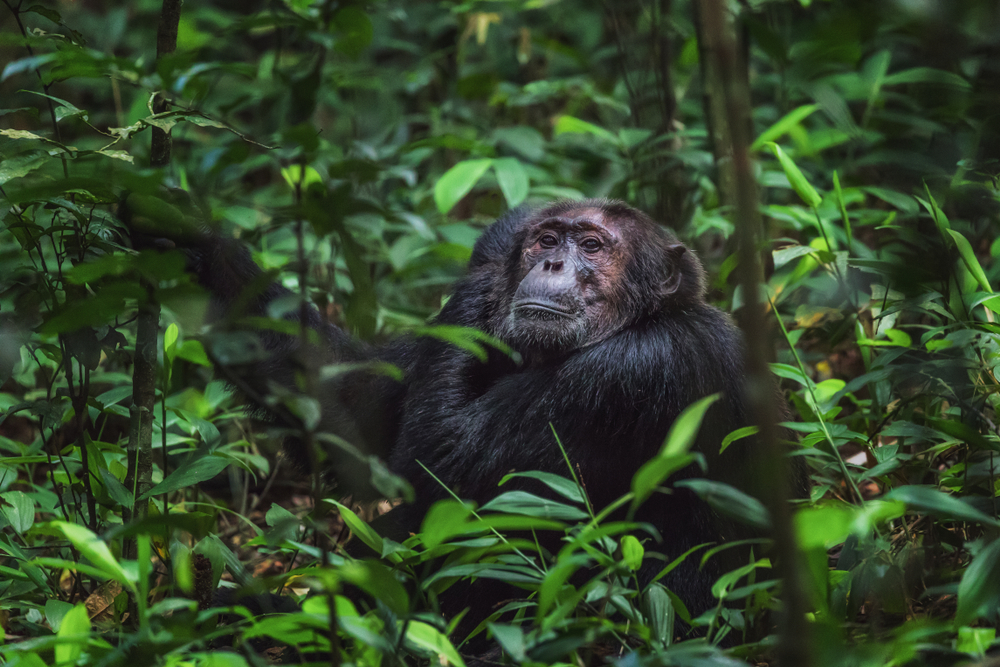Kibale Overview
Kibale National Park, known locally as Ekibira kya Kibale, is a lush tropical forest located in western Uganda, celebrated for its extraordinary primate biodiversity and vibrant ecosystems. Covering approximately 795 square kilometers (307 square miles), the park lies at the foothills of the Rwenzori Mountains and is part of Uganda’s extensive Albertine Rift Valley. Established as a national park in 1993, Kibale is a vital conservation area and one of East Africa’s most important sanctuaries for forest wildlife.
The park’s terrain is a rich tapestry of tropical rainforest, swamps, grasslands, and rivers, all thriving at elevations ranging between 1,100 meters (3,609 feet) and 1,600 meters (5,249 feet) above sea level. While Kibale does not feature towering peaks or dramatic waterfalls, the lush forest canopy and the tranquil waters of the Mpanga and Dura Rivers create an enchanting natural environment. Visitors are captivated by the sheer diversity of plant life and the immersive atmosphere of the park’s dense rainforest trails.
Kibale National Park is best known as the “Primate Capital of the World,” home to 13 species of primates, including the largest population of endangered chimpanzees in Uganda. Guided chimpanzee tracking is a highlight of any visit, offering an unforgettable experience of observing these intelligent and social creatures in their natural habitat. Other primates found in the park include red colobus monkeys, black-and-white colobus monkeys, L’Hoest’s monkeys, olive baboons, and the rare grey-cheeked mangabey.
In addition to primates, Kibale boasts an impressive array of other wildlife. Forest elephants, bush pigs, and duikers roam the forest floor, while the elusive leopards and African golden cats add an element of mystery to the ecosystem. Birdlife in the park is exceptional, with over 375 recorded species, including the African pitta, green-breasted pitta, and great blue turaco, making Kibale a premier birdwatching destination. Butterflies, reptiles, and amphibians also thrive within the park’s diverse habitats.
Conservation is at the heart of Kibale National Park’s mission. The park plays a critical role in protecting Uganda’s diminishing rainforest ecosystems and is part of the larger Kibale Conservation Area. Collaborative efforts between Uganda Wildlife Authority, conservation organizations, and local communities focus on forest restoration, anti-poaching initiatives, and chimpanzee research. Kibale also serves as a hub for ecological studies, with several international research institutions conducting long-term projects on primates and forest ecology.
Visitors to Kibale National Park can enjoy a variety of activities, including chimpanzee tracking, nature walks, and birdwatching. The Bigodi Wetland Sanctuary, located near the park, offers additional opportunities to explore the region’s rich biodiversity. Cultural tours to nearby villages provide insight into the lives of local communities and their relationship with the forest. Accommodations range from luxury lodges to budget-friendly options, ensuring a comfortable stay for all types of travelers.
In summary, Kibale National Park is a jewel of Uganda’s natural heritage, celebrated for its unparalleled primate biodiversity, lush rainforests, and successful conservation initiatives. Its captivating landscapes and wildlife experiences make it a must-visit destination for eco-tourists and nature lovers.













































































